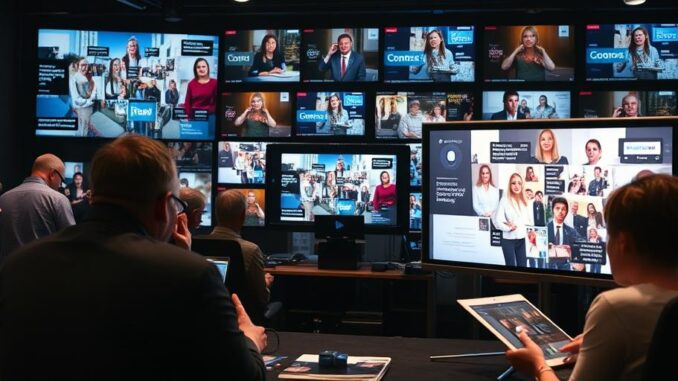
Summary
A ransomware attack on Frederick Health Medical Group in January 2025 compromised the sensitive data of nearly one million patients. The hospital faced a lawsuit for alleged negligence in protecting patient data and delayed notification of the breach. This incident highlights the growing threat of ransomware to healthcare systems and the importance of robust cybersecurity measures.
Explore the data solution with built-in protection against ransomware TrueNAS.
** Main Story**
You know, the cybersecurity landscape is constantly evolving, especially for healthcare providers. The recent ransomware attack on Frederick Health Medical Group is a prime example, and it’s something we should all be paying attention to. Back in January 2025, they got hit, and it wasn’t pretty. Nearly a million patients had their sensitive data exposed. That’s a huge number, and it really underscores the escalating threat we’re facing.
The attack, discovered on January 27th, crippled their IT systems, forcing them to scramble and implement backup processes just to keep things running. Imagine the chaos! This isn’t just about data; it’s about patient care being disrupted, and that’s what really hits home.
The Fallout: An In-Depth Look
Immediately after detecting the breach, Frederick Health contacted law enforcement and brought in a third-party forensic firm – the usual protocol, right? But the investigation revealed the extent of the damage: an unauthorized individual had accessed their network and copied files. The compromised data included practically everything you could imagine, from names and addresses to Social Security numbers and medical records. I mean, the whole kit and caboodle. They really got hit hard, and the information was all over the place.
Initially, Frederick Health didn’t disclose the exact number of affected individuals; however, they did report the incident to HHS on March 28th. The kicker? HHS later confirmed the breach impacted a staggering 934,326 patients! Think about that – nearly a million people now potentially vulnerable to identity theft and other scams. The impact for the patients involved is huge; a major impact on their lives.
Legal Battles and Public Outcry
Following the breach, Frederick Health sent out notification letters and offered credit monitoring services. But, and this is a big ‘but,’ a class-action lawsuit was filed on behalf of the affected patients. The lawsuit alleges that Frederick Health failed to implement adequate cybersecurity measures, ignored known threats, and dragged their feet on notifying victims. Talk about adding insult to injury! They’re also getting heat for not immediately offering identity theft protection services. This is one of the key things, offering assistance immediately. The lawsuit, filed on April 7th, 2025, seeks over $100,000 in damages, and Frederick Health had until May 9th to respond. I can’t imagine what their legal team is going through. I remember when we had that minor incident last year; even that was a headache.
Why Healthcare is a Prime Target
It’s no secret that healthcare systems are prime targets for ransomware attacks. I mean, think about it: they store massive amounts of highly sensitive data, making them incredibly attractive to cybercriminals. And because patient care is so critical, hospitals are often more willing to pay a ransom to get their systems back online quickly. This creates a dangerous incentive for attackers, doesn’t it? The Frederick Health incident just goes to show that even large, well-resourced healthcare systems aren’t immune to these sophisticated attacks. We really need to get our heads around this.
Strengthening Defenses: Key Steps to Take
So, what can we do to protect ourselves? Experts are urging healthcare organizations to prioritize cybersecurity and take proactive measures to prevent these attacks.
-
Regular Security Assessments and Penetration Testing: We need to constantly be looking for vulnerabilities in our systems, and penetration testing is a great way to do that. Find the holes, before someone else does.
-
Robust Data Backup and Recovery Procedures: Having solid backup and recovery plans is crucial. If an attack happens, you want to be able to restore your systems quickly and efficiently. Making sure your business keeps going if you are attacked.
-
Employee Training and Awareness Programs: This is huge. We need to train our staff to recognize and avoid phishing and other social engineering tactics. They’re often the weakest link in the chain, unfortunately.
-
Multi-Factor Authentication (MFA): MFA is a must-have for accessing sensitive systems and data. It adds an extra layer of security that can prevent a lot of breaches. Not many hackers get through that level of security.
-
Endpoint Detection and Response (EDR) Solutions: EDR solutions can monitor systems for malicious activity and enable rapid response to threats. It’s like having a security guard watching your network 24/7.
As of today, June 21st, 2025, the lawsuit against Frederick Health is still ongoing. It’s a stark reminder that robust cybersecurity practices are no longer optional; they’re essential for protecting patient data and maintaining trust. And let’s be honest, that trust is everything in healthcare. We can’t be complacent; we need to stay vigilant and constantly adapt our defenses to stay ahead of the ever-evolving threat landscape. So what can we do today to make sure something like this doesn’t happen to us?


The Frederick Health breach underscores the critical need for robust data backup and recovery. Beyond immediate restoration, regularly testing these procedures is vital to ensure effectiveness when a real attack occurs. How often should healthcare organizations realistically test their recovery protocols?
That’s a great question! The frequency of testing recovery protocols is a hot topic. While daily might be excessive, quarterly testing, or at minimum bi-annually, feels like a responsible approach. This allows for adjustments based on evolving threats and system updates. What are others’ experiences with testing frequency?
Editor: StorageTech.News
Thank you to our Sponsor Esdebe